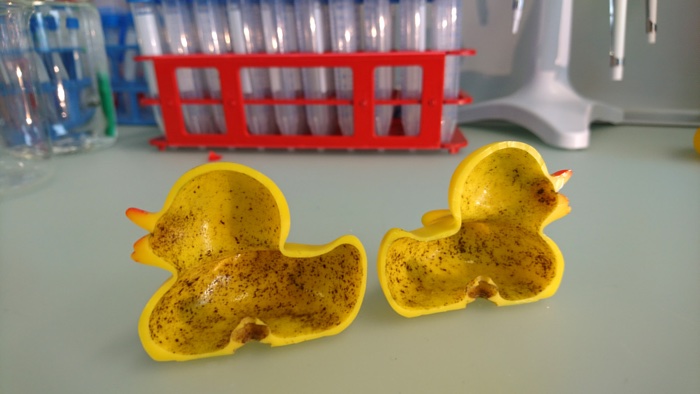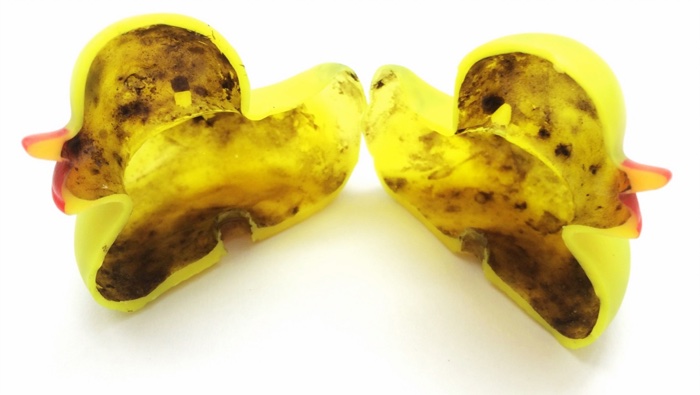It's one of the happiest-looking, most unassuming objects in your home. It exists only to float and create smiles. But behind the buoyant facade lies a dirty, dangerous secret.
New research reveals rubber ducks have a dark side that's both figurative and literal, with scientists discovering these seemingly wholesome toys act as incubators for potentially pathogenic bacterial and fungal growths – which cling to the duck's inner cavities in a mucky biofilm of filth.
Surprised? We probably shouldn't be.
After all, we know we're continually surrounded by bacteria traps in our daily lives, and items we associate with cleaning are actually the most unclean of all.
 (Eawag)
(Eawag)
But it's particularly unsettling to find out the rubber ducky is one of these questionable objects, because it occupies a special place in our homes.
Unlike the rudimentary kitchen sponge – devoid of character or presence – rubber ducks are something we associate with happiness, laughter, innocence.
Children play with them, squeeze water out of them, even put them in their mouths.
In the new study, scientists led by the Swiss Federal Institute of Aquatic Science and Technology collected 19 real bath toys from Swiss households, and mimicked real-world conditions for six separate new toys, exposing them to clean and dirty bath water, mixed in with things like soap, human body fluids, and bacteria.
This cohort – rubber (actually plastic) ducks, crocodiles, and other bathtime toys – may have started out squeaky clean, but they didn't stay that way for long.
 (Eawag)
(Eawag)
After 11 weeks of simulated household use, all the toys were bisected in the lab, revealing between 5–75 million cells per square centimetre in the biofilm lining their inner surfaces.
Fungal species were detected in almost 60 percent of the real bath toys and in all the new toys exposed to dirty water, and potentially pathogenic bacteria were found in 80 percent of all the toys.
The results might sound disgusting, but in actuality, exposure to these microbial communities is kind of a mixed bag, the researchers say.
"This could strengthen the immune system, which would be positive," explains microbiologist Frederik Hammes, "but it can also result in eye, ear, or even gastrointestinal infections."
 (Eawag)
(Eawag)
Ultimately, the team says more research needs to be done to figure out how potentially dangerous these bacterial and fungal biofilms could be – especially to children – and advise the risks may be mitigated by cleaning toys after bathtime, by boiling and drying them, to minimise their capacity for incubation.
Or, you could look for bath toys that don't have a squeaky hole that sucks in water, although, as the team highlights, this has its own drawbacks.
"The easiest way to prevent children from being exposed to bath toy biofilms is to simply close the hole," they conclude, "but where is the fun in that?"
The findings are reported in npj Biofilms and Microbiomes.
